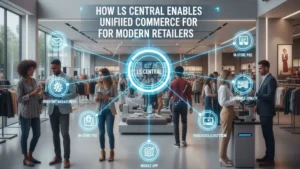Top Challenges in Renewable Energy Manufacturing & How ERP Helps
As the world shifts towards sustainability, renewable energy manufacturing is at the forefront of this global transformation. Companies engaged in solar, wind, bioenergy, and hydropower production are skyrocketing. However, this growth also brings a unique set of challenges—from supply chain constraints to regulatory compliance, fluctuating demand, and managing innovation. To succeed in this evolving landscape, renewable energy manufacturers are increasingly turning to Enterprise Resource Planning (ERP) systems. An ERP solution acts as a digital backbone, integrating various business functions into a single platform to streamline operations, improve visibility, and drive strategic decisions. In this article, we explore the top challenges in renewable energy manufacturing and how ERP helps overcome them. 1. Complex and Global Supply Chains The Challenge: Renewable energy manufacturing often involves sourcing rare or specialized materials from multiple countries. For example, wind turbines require rare earth metals like neodymium and dysprosium, often sourced from limited suppliers across the globe. Additionally, the production of solar panels involves polysilicon, glass, and specialized semiconductors, all of which may be subject to geopolitical and logistical risks. Disruptions—whether due to pandemics, political tensions, or natural disasters—can cause significant delays and cost overruns. How ERP Helps: An ERP system centralizes supply chain management. It enables real-time tracking of materials, automates procurement workflows, and provides alerts for potential delays. Manufacturers can use ERP to: By enhancing visibility and control, ERP helps reduce dependency on vulnerable supply chains. 2. Regulatory Compliance and Sustainability Reporting The Challenge: Renewable energy companies must comply with a myriad of environmental regulations, energy production standards, labor laws, and international trade policies. Moreover, as ESG (Environmental, Social, and Governance) reporting becomes a norm, organizations need to provide transparent sustainability reports to stakeholders. Staying compliant across multiple jurisdictions while maintaining operational efficiency is a difficult balance. How ERP Helps: Modern ERP platforms come with built-in compliance management and reporting tools. They can: ERP also keeps organizations audit-ready by maintaining accurate and time-stamped records, reducing the risk of non-compliance penalties. 3. High Capital Costs and Long ROI Cycles The Challenge: Renewable energy projects require substantial upfront investments. Building a solar farm, manufacturing turbines, or setting up battery production lines involves millions of dollars in capital. Moreover, the return on investment (ROI) may take several years due to long payback periods and fluctuating market demand. Mismanagement of costs can derail entire projects and impact profitability. How ERP Helps: An ERP system enables detailed financial planning and cost tracking. Through integrated modules for finance, project management, and procurement, ERP helps: By offering transparency in financial operations, ERP helps renewable energy companies make informed decisions and improve ROI predictability. 4. Rapid Technological Advancements The Challenge: Technology in renewable energy is evolving at a breakneck speed. Innovations like floating solar panels, high-efficiency batteries, hydrogen fuel cells, and smart grid integration are reshaping the industry. For manufacturers, keeping up with this pace while maintaining product quality and compliance can be overwhelming. Outdated systems and manual processes hinder scalability and adaptation to new technologies. How ERP Helps: ERP platforms provide the agility needed to support innovation. With capabilities like: ERP helps manufacturers stay ahead by quickly adapting production lines, managing R&D workflows, and ensuring compliance with evolving standards. 5. Workforce Skill Gaps and Labor Management The Challenge: As a relatively new industry, renewable energy manufacturing faces a shortage of skilled labor—especially in fields like engineering, automation, robotics, and data analytics. Moreover, managing a hybrid or remote workforce across multiple locations adds complexity to HR and operational management. Labor inefficiencies can lead to production delays and increased operational costs. How ERP Helps: ERP systems streamline human resource management by offering tools for: Advanced ERP platforms also support talent development by identifying skill gaps and automating learning management systems (LMS). This ensures a competent and productive workforce aligned with business goals. 6. Demand Volatility and Market Fluctuations The Challenge: While global demand for clean energy is rising, it can also be highly volatile due to changing government policies, subsidies, and economic conditions. For example, the expiration of tax incentives for solar projects in some regions can suddenly slow down demand. Without accurate forecasting, manufacturers risk overproduction or under-delivery. How ERP Helps: With integrated demand planning and forecasting tools, ERP helps renewable energy manufacturers to: ERP ensures manufacturers remain responsive and resilient, even in unpredictable market conditions. 7. Asset and Maintenance Management The Challenge: Equipment used in renewable energy manufacturing—such as robotic arms, casting machines, and test rigs—is often highly specialized and expensive. Downtime due to equipment failure can halt entire production lines and lead to significant losses. Proactive asset maintenance is essential but difficult without centralized systems. How ERP Helps: ERP systems with asset management modules allow: By minimizing downtime and extending asset life, ERP ensures uninterrupted production and reduces maintenance costs. 8. Data Silos and Fragmented Processes The Challenge: Many renewable energy manufacturers operate with disconnected tools—spreadsheets for finance, standalone CRMs, manual inventory systems, etc. This leads to data silos, inconsistent reporting, and inefficient workflows. Lack of integration limits visibility and slows decision-making. How ERP Helps: An ERP system unifies all departments—finance, production, supply chain, HR, and customer service—on a single platform. Benefits include: ERP acts as a single source of truth, enhancing collaboration and strategic alignment. Conclusion The renewable energy sector holds immense promise, but manufacturers must overcome complex challenges to remain competitive and sustainable. From managing supply chains and regulatory compliance to adapting to innovation and optimizing costs, the road ahead is demanding. ERP systems offer a comprehensive solution by integrating data, automating workflows, and enabling agility. With the right ERP platform in place, renewable energy manufacturers can not only address these challenges but also lead the charge towards a cleaner, more efficient future. FAQs Q 1. What is ERP in renewable energy manufacturing? Ans: ERP (Enterprise Resource Planning) is a software system that integrates various business functions such as supply chain, production, finance, HR, and inventory into one platform. In renewable energy manufacturing, it helps manage operations more efficiently and improve data-driven decision-making. Q 2. How does
Top Challenges in Renewable Energy Manufacturing & How ERP Helps Read More »






